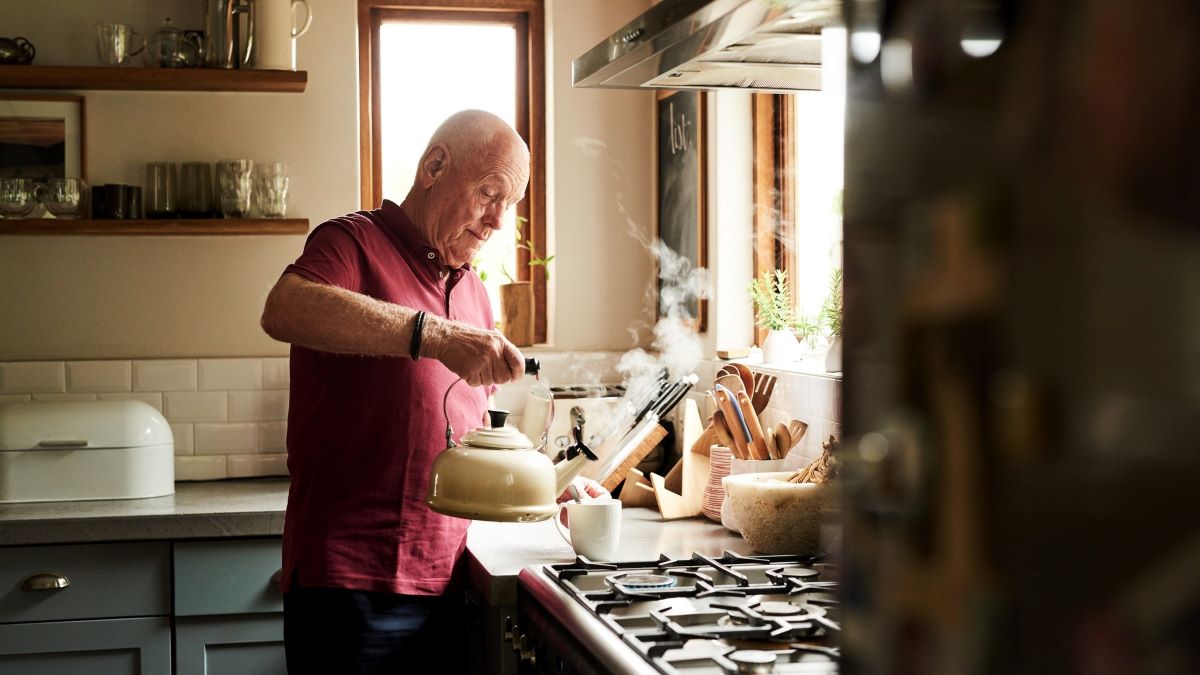Whether we’re eating alone or sharing food with friends and family, our kitchens are central to our home life. Our appliances that help us heat up or cool food, clean our clothes or our crockery and most importantly, make a decent cup of tea make up a significant proportion of our daily energy use.
But a few simple actions can significantly reduce the amount of energy you use in your kitchen, saving you money on your bills and reducing the amount of carbon emissions you produce. We’ve got some suggestions below on how to use appliances more effectively, as well as some ways of reducing the energy required to heat our food.
Check the first part of our look at kitchen energy efficiency to find out how changing some everyday habits can cut our energy use as well as what to look for when you’re buying a new kitchen.
Top cooking tips
Preparing and heating our food might not strike you as an obvious place to save energy. But we’ve got some great tips on how to save energy while cooking, making you an environmentally friendly chef.
- boil water in a kettle, then transfer to a pan, rather than boil water on the stove. Only ever use as much water as you need
- cover pots and pans with lids, the food heats faster while the process uses less energy
- microwaves heat food far more efficiently than electric and gas hobs
- turn off the heat a couple of minutes before your meal is fully cooked. Electric hobs, in particular, take time to cool down and your food will continue to cook in the pan
- keep the oven door closed and look through the glass door to check if your food is ready. Energy and heat escape every time you open the oven door
- prepare food in larger batches to save energy
- slow cookers are incredibly energy efficient and also help to conserve water
- pressure cookers have a sealed lid that traps steam and locks it into the pan, cooking your food more quickly and efficiently
Choose the right appliance

Energy-efficient appliances help to reduce bills and reduce greenhouse gas emissions.
Complete an energy audit of all your appliances as your first step. Find out the energy efficiency rating for each appliance by reading the appliance handbooks or looking them up online.
Check the temperature of your fridge (more on refrigerators later) and keep a record.
Consider the size of appliance you need. How much do you use specific devices? Many kitchen items are more energy-efficient nowadays, but they are also bigger, cutting out any energy savings. Remember that a larger model that’s more efficient could cost you more to run than a smaller model with lower efficiency.
Note the age of your appliances and consider changing appliances that are +10 years old for more efficient models.
Find out more about choosing home appliances.
Look at your fridge
Cooling things down is as essential as heating them and, unlike cookers, fridges and freezers work around the clock.
Freestanding fridge-freezers, with the freezer on top of the fridge, are the most energy-efficient fridges.
You can save up to £15 a year in bills by using an A+++ rated fridge freezer vs an A+ fridge freezer.
Here are some more energy-saving tips for your fridge, one of the most significant energy-using appliances in your kitchen.
- never put hot or warm food into a fridge or freezer; let it cool down thoroughly first
- like the oven door, never leave the fridge door open unnecessarily, keep it closed and keep the cooler air inside
- defrost food in the fridge. The food acts as an ice pack, helping keep the fridge cool
- fridges optimum temperature is 0-5 degrees Celsius
- your fridge works best 3/4 full. You can use bottles of water to fill them out. Avoid over-filling the fridge because the fridge has to work harder to circulate cold air
- defrost your fridge and freezer regularly
- ensure there’s at least a 10cm gap behind your fridge to let hot air flow away more quickly
- clean the coils regularly; fluffed coils can reduce working efficiency by 25%
The vast majority of our energy use in the home comes from heating and hot water, so always ensure your boiler and water heating system is energy efficient to access potential carbon and financial savings.
Another area to think about in the kitchen could be how you use lighting – see our information on energy efficient lighting solutions for more.
And finally we tend to use a lot of water in the kitchen too. Fitting a water flow limiter on your kitchen tap, can reduce the amount of water you use.
We’ve got loads more tips on home energy efficiency on our website, or check the first part of our look at energy efficiency in the kitchen for more.
- read our guide to saving water at home
- find out more about energy efficient home appliances